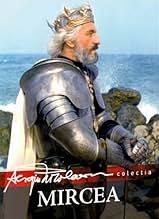After 1394 King Mircea the Elder, ruler of Wallachia, ponders the eventual consequences of a military alliance with the Poles versus one with the Turks.After 1394 King Mircea the Elder, ruler of Wallachia, ponders the eventual consequences of a military alliance with the Poles versus one with the Turks.After 1394 King Mircea the Elder, ruler of Wallachia, ponders the eventual consequences of a military alliance with the Poles versus one with the Turks.























